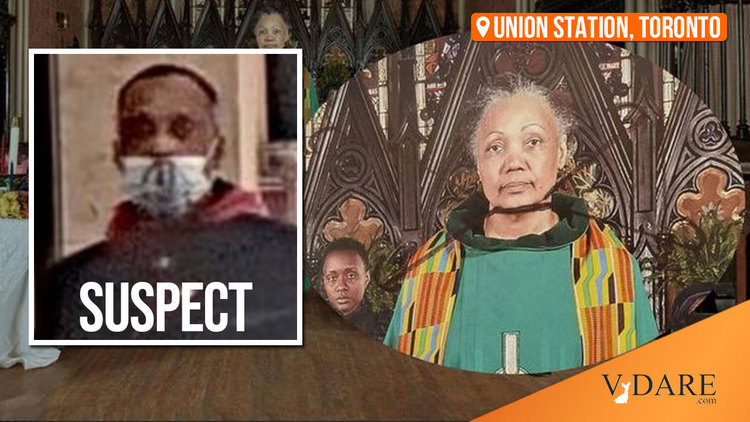
TORONTO STAR: A Hate Crime Has Been Committed By What Must Have Been A White Supremacist With Deep, Scholarly Love Of Black History
01/26/2022
From the Toronto Star:
Art installation at Union Station vandalized with a slave collar drawing
The artist behind the piece, Anique Jordan, said she was “rocked” by the incident.
By Angelyn Francis, Equity and Inequality Reporter
Tue., Jan. 25, 2022A public art installation inspired by Toronto’s Black history was vandalized with a drawing of a slave collar. But it wasn’t reported for a week until the subject saw it herself.
/https://www.thestar.com/content/dam/thestar/news/gta/2022/01/25/art-installation-at-union-station-vandalized-with-a-slave-collar-drawing/main_artworxto_unionstationhubopening_85.jpg)
Late Sunday afternoon, Gloria C. Swain, who is the main subject of the group photo, went to see the image which has been on display at Union Station since the fall and saw the defacement.

“I was angry. I was hurt. (I had) a lump in my throat, a lump in my stomach,” Swain told the Star.
The device that was drawn around her neck is a heavy iron device used during the Transatlantic slave trade era to punish slaves, prevent escape and make it difficult to lie down.
Swain said she filed a police report and Toronto police said officers have reviewed security footage, spoken to witnesses and have a description of a suspect whom they are trying to identify.
But the newspaper thought it subversive of the Narrative to share the description of the suspect with its readers.
For Swain and Jordan the vandalism is visibly racist.
“For somebody to draw that particular type of bondage that is specific to chattel slavery, you had to know what you were doing and have some level hate or some deliberate intent to cause harm to a particular group of people,” Jordan said.
She said racist symbols related to the KKK or nooses circulate widely, but someone would have to have a deep sense of Transatlantic slave history to be familiar with this sort of device.
The photo, Mas’ at 94 Chestnut, is a tribute to a historically Black church which was built in 1845 in the downtown core. …
For Swain, she said this is a sad reminder of how challenging it is to be a Black artist in Toronto and find space and support. She said she hopes this incident isn’t just “pushed aside.”
From Gloria C. Swain’s website:
Gloria C. Swain is a MAD multidisciplinary artist [she/her], seniors’ rights and Black mental health advocate working out of Toronto. She works within the mediums of installation, painting, performance, and photography to challenge systemic oppression against Black women and trans folks.
Back to the Toronto Star:
This is not the first time a public art installation featuring Black people has been vandalized. In 2017, some of photographer Jalani Morgan’s photos were slashed when they were displayed on King Street West, according to Photo District News. He mended the vandalism with red yarn, which stood out against the black and white images and showed resilience. …
“If we use this situation as an example of who is allowed to exist in the city peacefully and freely occupy public space, then this paints a bleak picture of Toronto,” Wilson-Sanchez told the Star.
But from the Toronto Police, here’s a picture of the suspect:

This is the point at which I explain that possessing the concept of “hate hoax” makes you better able to deal with reality than big city newspapers. As I wrote about Jussie Smollett’s fake noose story:
In contrast, The New York Times, for instance, has never even printed the term “hate hoax.” Instead, there’s just an Epidemic of Hate perpetrated by what Tom Wolfe would call the Great White Defendants…and then there are forgotten random incidents that didn’t quite pan out. But to the prestige press there’s no such thing as a pattern of purported hate crimes routinely imploding embarrassingly.
